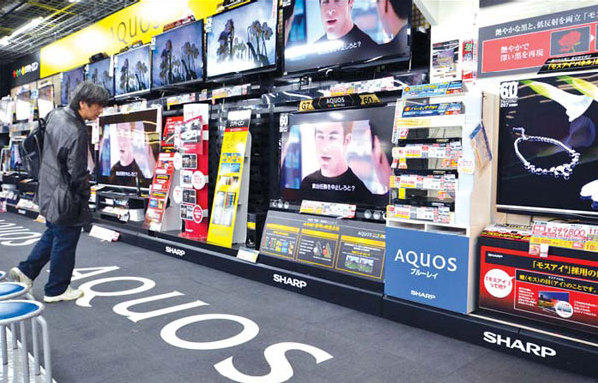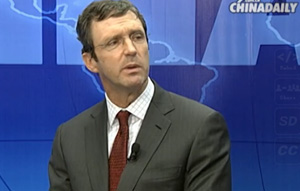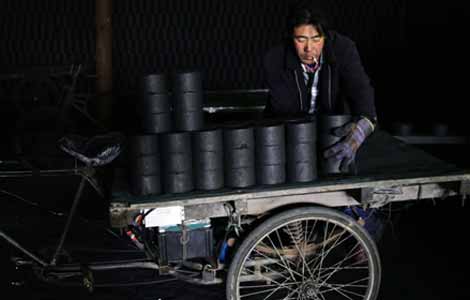Creating the next Asian global name
Updated: 2013-11-25 07:50
By Karl Wilson in Sydney (China Daily)
|
|||||||||
Branding is key for companies aspiring to become well-known retail leaders
With better quality products, improved supply chains and rising demand, Chinese and Asian corporations are increasingly making their way onto the global corporate stage. But they are unlikely to become true international players if they do not focus on getting their brand strategy right.
"All the surveys that are done on branding show that in Asia you probably have 10 recognised global brands," says brand strategist Martin Roll, author of the bestselling book Asian Brand Strategy.
|
A customer looks at LCD television sets made by Japanese multinational Sharp Corp at a store in Tokyo. Asian corporations need to make branding an integrated part of all strategy decisions for their products to compete in the global league. AFP |
"And most of them are Japanese and South Korean, with a few from the rest of Asia," he says.
Analysts say the problem is cultural and that many Asian corporations are locked into a corporate structure that is still family run and where branding is simply seen as an extension of advertising. But the status quo may be slowly shifting.
"I think that attitude is changing," says Ganeshan Wignaraja, director of research with the Asian Development Bank Institute (ADBI) in Tokyo, comparing the situation with that of Japan three or four decades ago.
"Many companies now coming out of China and other parts of Asia are a generation or so behind the more established and well-known global companies from Japan or South Korea when it comes to branding.
Wignaraja explains that although building a brand can be extremely costly and time-consuming, it is essential. Without branding, a company will find it very difficult to become accepted as a household name, he adds.
"Competition today is fierce and branding will hold the key to success or failure."
Roll believes Chinese companies still have a long way to go to build their brands globally.
"It requires a totally new mindset. Chinese business leaders need to learn what it means to build something like a brand, which is much more than a slick logo," he says.
"They need to elevate branding to the boardroom level and engage a chief marketing officer - to put marketing at the forefront of business strategy."
Business leaders in China must also benchmark global practices, Roll says. Companies need to research the most successful peers in their own industry and study what is being done in other industries.
"There is a common belief - and it is often stated - that the track for Chinese firms will be very different than any other country from Asia. I don't believe that.
"It is a fallacy to believe that China will globalize in a different way. Many others have done it before them. China has to learn from the world when it comes to best practices in brand-building."
Global Chinese brands will not happen by chance, Roll says. It will only happen through a thoroughly planned strategy executed relentlessly over a long time.
He says that Samsung Group, the South Korean electronics giant, is one of the best examples of an Asian brand that has taken the globalization strategy seriously. It started early to focus on its brands as a key strategic initiative.
"Only now, after 10 to 15 years, is it starting to pay off," he says.
Another example is Singapore Airlines Ltd, which Roll describes as a "brilliant example of a global brand that has set standards for more than 40 years in a very competitive category".
Ying Zhu, director of the Australian Centre for Asian Business at the University of South Australia, says he can see two potential scenarios that could emerge from China when it comes to company branding.
"They can either start from scratch and build a brand, or they take the easy way out and buy an established company that everyone knows. That way you avoid the costly process of brand-building," he says.
He cites the example of Zhejiang Geely Holding Co Ltd, a little known, at least outside China, automaker based in Hangzhou that signed a $1.8 billion agreement in 2010 to buy AB Volvo.
At the time of the deal's announcement, a writer for Businessweek was prompted to write: "Geely is paying $1.8 billion for the brand."
But, speaking from his office in Adelaide, Zhu explains how there was much more to the deal - and that the benefits were not just on the Chinese company's side.
"Geely not only bought the brand, it bought Volvo's technology, research and development, management and skilled workforce.
"For Volvo, the door had opened to a massive domestic market," he says.
"It is globalization, but in a different order. Not all that long ago, around Asia you would hear people talk about the westernisation of Asia. Now the wind has changed direction."
Another more recent example is State-owned Bright Food (Group) Co Ltd buying the iconic British breakfast cereal maker Weetabix Ltd in May last year.
"These are companies with established brands all over the world. For the Chinese companies, they can leverage their own products off these established names onto the global market," says Ying.
"It also opens the door for Weetabix products to reach the shelves of Chinese supermarkets and stores. So it really is a win-win for both companies."
Weetabix is the UK's second largest branded manufacturer by value of ready-to-eat cereals and food bars. It will be seen as a major boost to the Chinese domestic food sector.
But these companies are the exceptions.
There are many Asian corporations that could quite easily take their place in the global league and sit alongside the likes of the Coca-Cola Co or even Apple Inc.
Before that can happen, however, Asian companies must accept branding for what it is, rather than relegate it to the marketing department.
"The new change-makers in Asia are the second- and third-generation family owners who for the first time are daring to question the existing business models," Roll says.
It is natural for younger generations to want to move away from the traditional Asian manufacturing and trading paradigm into an era of brands and trademarks, he adds.
"They typically have overseas experience from other industries or consulting, and they bring that mindset back to Asian boardrooms."
If the recent report by the McKinsey Global Institute, Urban World: The Shifting Global Business Landscape, is any guide, by 2025, there will be some 7,000 new global corporations with revenues in excess of $1 billion.
A large number of them will be from China and Asia.
"By 2025, some of the global leaders in many industries may be companies we have not heard of. Many of them are likely to be based in cities that we could not point to on a map," the report says.
"The proliferation of large companies is likely to usher in an era of heightened corporate competition for markets, resources and talent."
The big questions, however, will rest on the leaders' ability to brand themselves and be aggressive in their branding.
There are enough success stories in the region, however, to prove that it can be done by Asian companies.
Ho Kwon Ping, founder and executive chairman of the boutique hotel and spa chain Banyan Tree built his group's brand from scratch.
"We are an Asian company that is global, with hotels in Asia, Mexico, the Middle East and Africa. We employ 12,000 people from 66 different nationalities.
"Our policy has always been that our core brand asset must remain universal to all customers," he said, speaking during a panel discussion on brand building at the Asia Consumer Summit in Singapore last year.
Ho explained how customers resonate to the same values all over the world.
"One of our core values is a sense of place. If a customer goes to one of our hotels in Mexico that person will know where he or she is."
He said that it is not his company's policy to develop a brand that caters just for one demographic.
"The success of a brand," he added, "must be universal."
karlwilson@chinadailyapac.com
(China Daily 11/25/2013 page15)

 Cutting output to help ease pollution
Cutting output to help ease pollution
 Sochi Olympic flame plunges into largest freshwater lake
Sochi Olympic flame plunges into largest freshwater lake
 Mount Etna erupts, lighting up Sicilian sky
Mount Etna erupts, lighting up Sicilian sky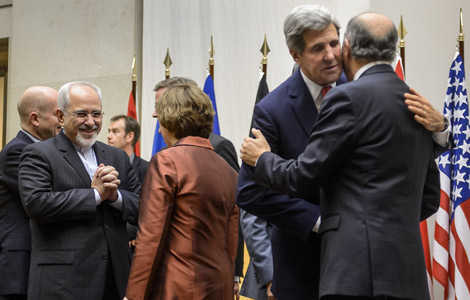
 Deal reached in Iranian nuclear talks
Deal reached in Iranian nuclear talks
 Bitter pill for traditional Chinese medicine
Bitter pill for traditional Chinese medicine
 Rescuers work in Tacloban
Rescuers work in Tacloban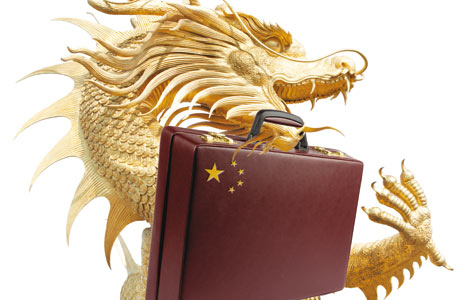
 Roar of the East being heard
Roar of the East being heard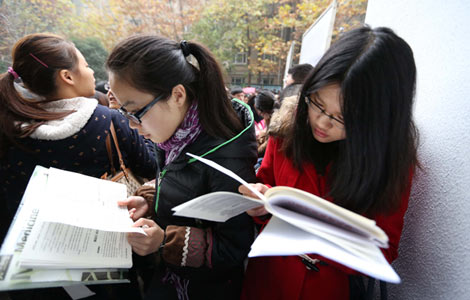
 1.12m seek government jobs
1.12m seek government jobs
Most Viewed
Editor's Picks

|

|

|

|

|

|
Today's Top News
Deal reached in Iranian nuclear talks
Getting to know Tianjin
Pactera regains some momentum
Tricky Business: Catering to Chinese viewers is Hollywood hurdle
Xi urges safety check after blasts
Qingdao continues recovery
City starts loosing one-child policy
New air zone in line with practice
US Weekly

|

|
